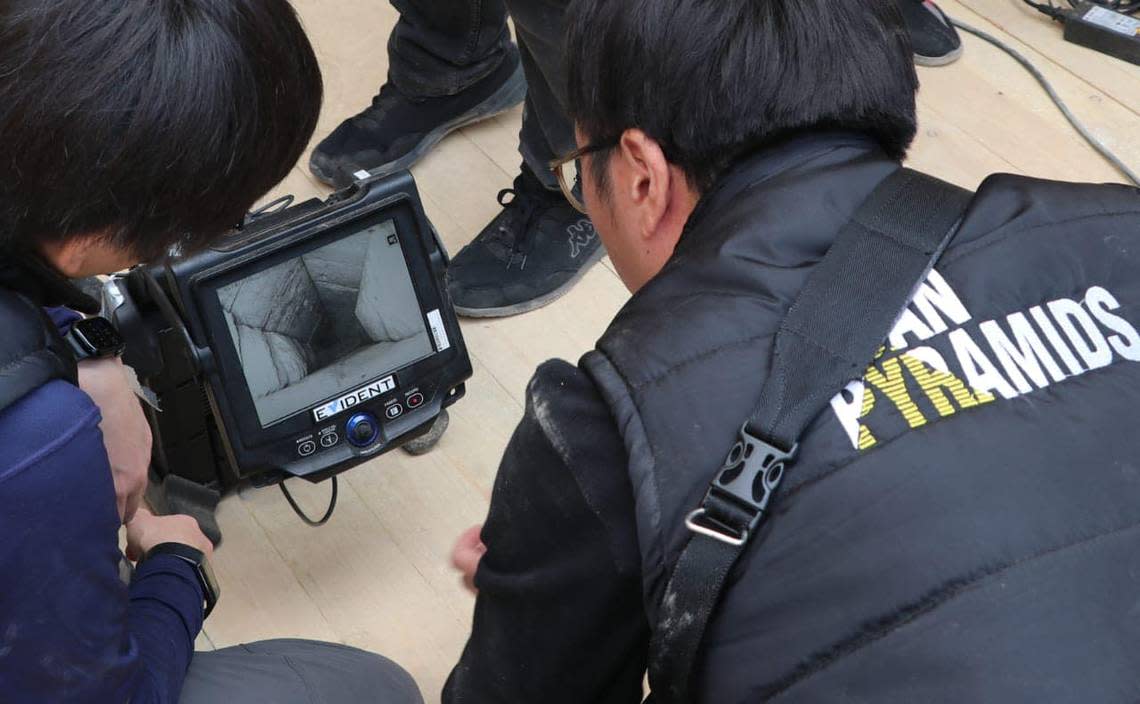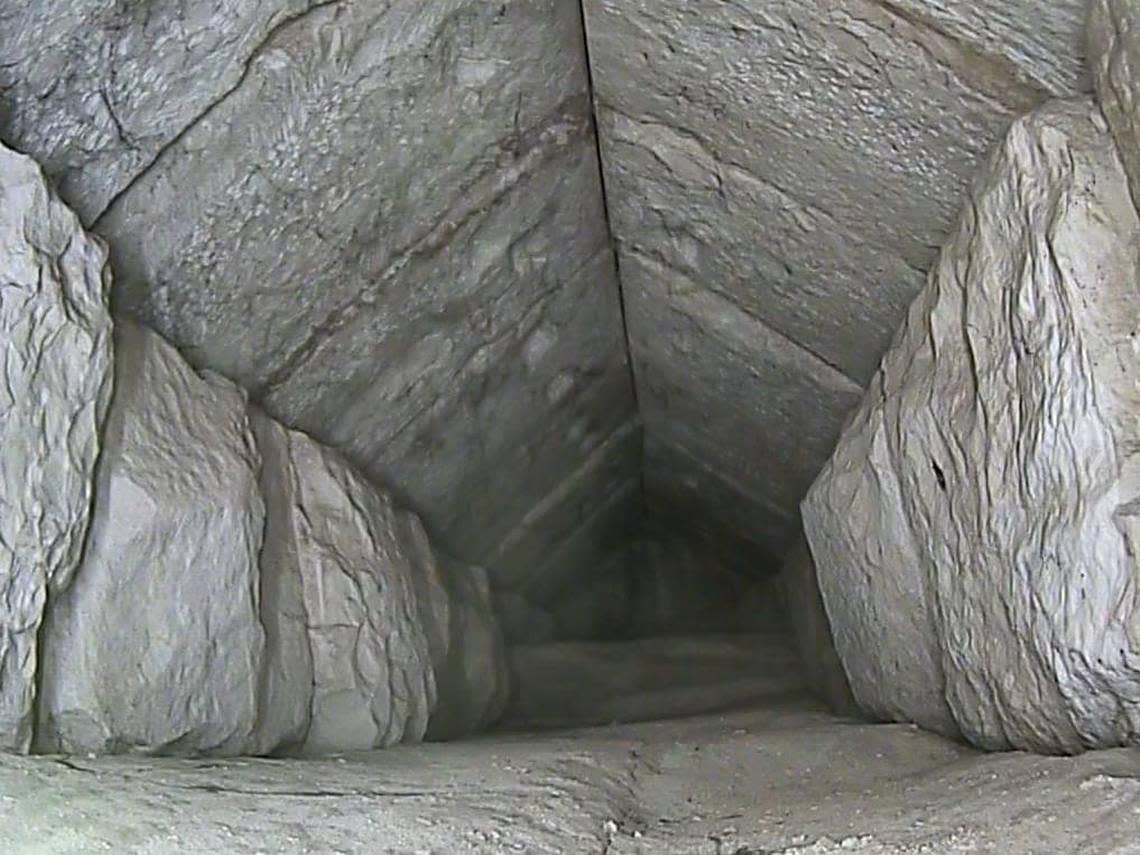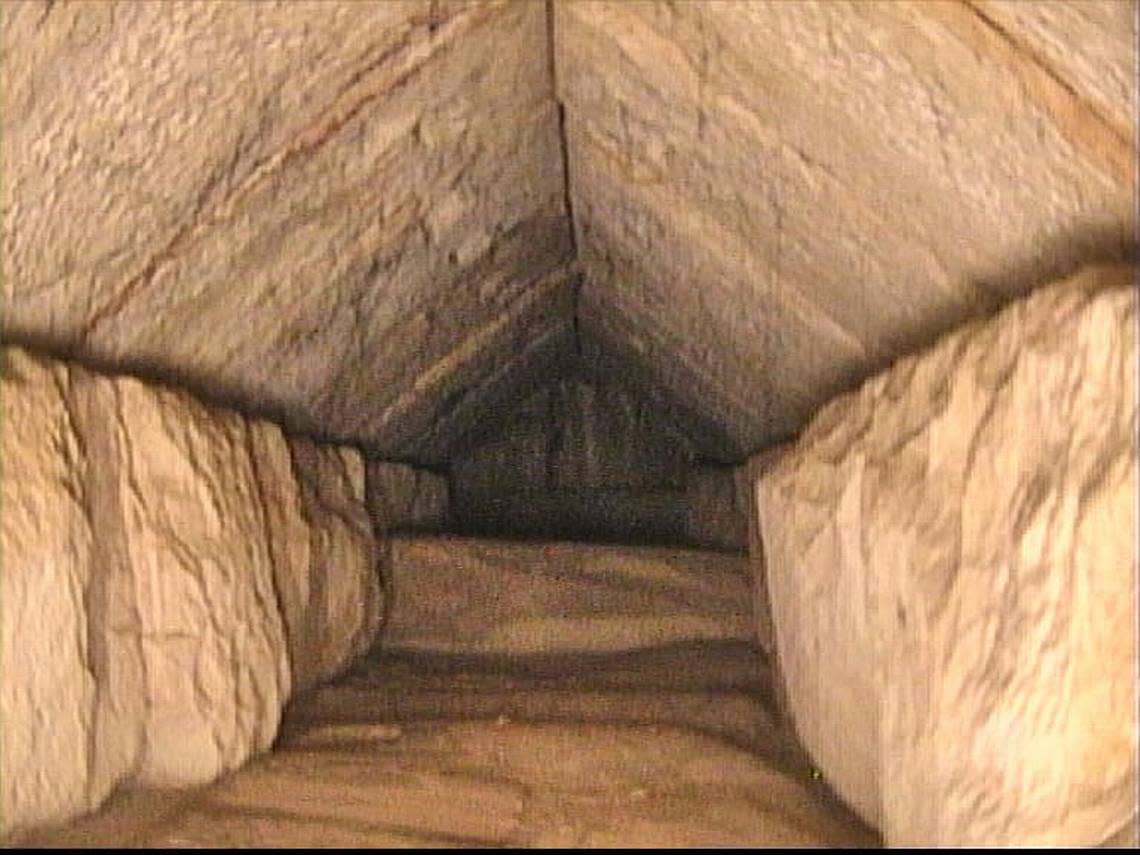Never before seen tunnel discovered in the Pyramid of Giza. Take a look at its secrets
The Great Pyramid of Giza, or Khufu’s Pyramid, named for the second king of Egypt’s fourth dynasty, was built over 4,000 years ago but remains the idyllic symbol of Egyptian history and architectural ingenuity.
As the last of the Ancient Seven Wonders of the World still standing, the pyramid of Cairo, Egypt, has long been a source of mystery. How was it built? What was its purpose? How has it been able to stand the test of time?
Thousands of years later, it is still holding secrets.
In a new study published in Nature Communications on March 2, researchers revealed a never before seen corridor in the walls of the pyramid.
ScanPyramids SP-NFC 2023 Report from HIP Institute on Vimeo.
The research team, called ScanPyramids, previously used a technology called cosmic-ray muon radiography to see into the pyramid in a nondestructive way. In 2016 and 2017, the team found a previously undiscovered void along the north face, at least 16 feet long behind what is called the “chevron zone” of the pyramid.

By using a 6-millimeter-thick endoscope, or tiny camera on a movable rod, the researchers slid the camera between the stones of the pyramid and took a look inside the void for the very first time, Reuters reported.
What they found was a corridor, about 30 feet long and 7 feet wide, with the chevron shape on the ceiling, according to the study. It was likely the first time any human had seen the inside of the corridor in 4,500 years.

The corridor appears to be unfinished, but the researchers believe it may have been used to relieve some of the weight and pressure of the stones, and the chevron-shaped ceiling would distribute the weight above the corridor down the sides of the stone instead of above them, Mustafa Waziri, secretary general of the Supreme Council of Archaeology explained in a Ministry of Tourism and Antiquities release.

Previous work from Harvard University used digital imaging to create a three-dimensional tour through the Great Pyramid of Giza, allowing anyone around the world to take a look inside history.
Thanks to Harvard University, you can now virtually enter the Great Pyramid of Giza in 3D and 360º pic.twitter.com/7ZYVanpZuu
— Tansu YEĞEN (@TansuYegen) November 11, 2022
At a March 2 news conference in Cairo, Waziri said the Ministry of Tourism and Antiquities is eager to use modern technology and equipment to reveal the secrets of the pyramids and Ancient Egypt civilizations, something he said was one of the strengths of Egypt, according to the release.
Rare critter eluded Kansas biologists for years. A sardine dinner proved irresistible
2,000-year-old tunnels found under Spanish church give insight into Roman invasion
‘Mysterious’ creature seen hopping along rainforest river for first time in 24 years
‘Overlooked’ skeleton identified as 19th century woman. ‘Now she’s got her name back’
